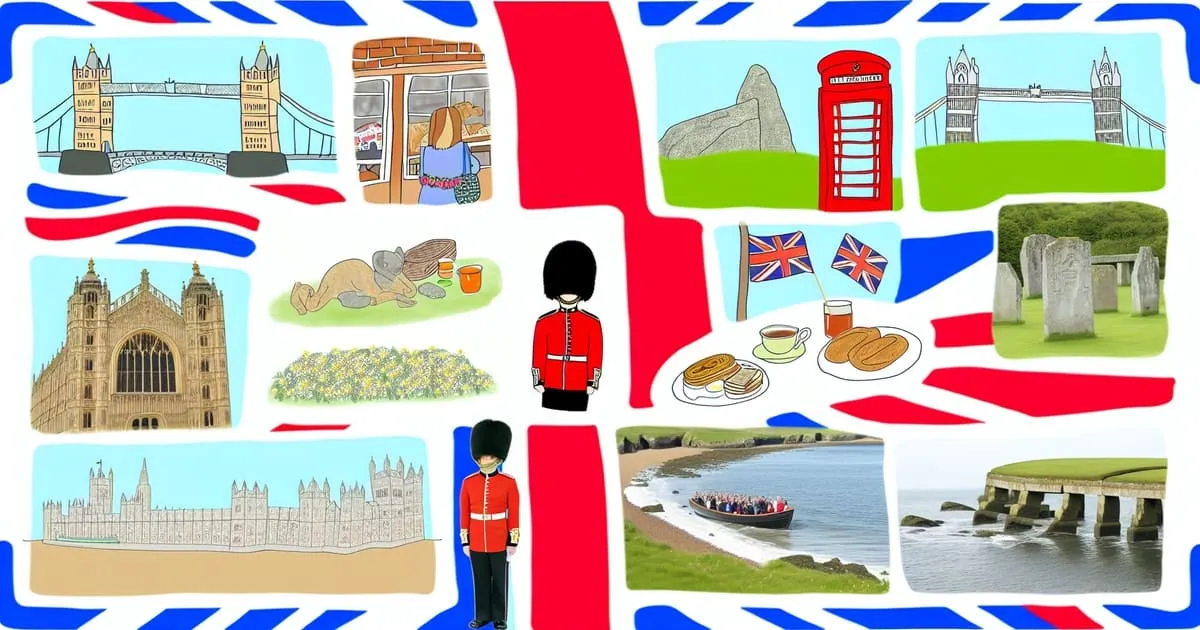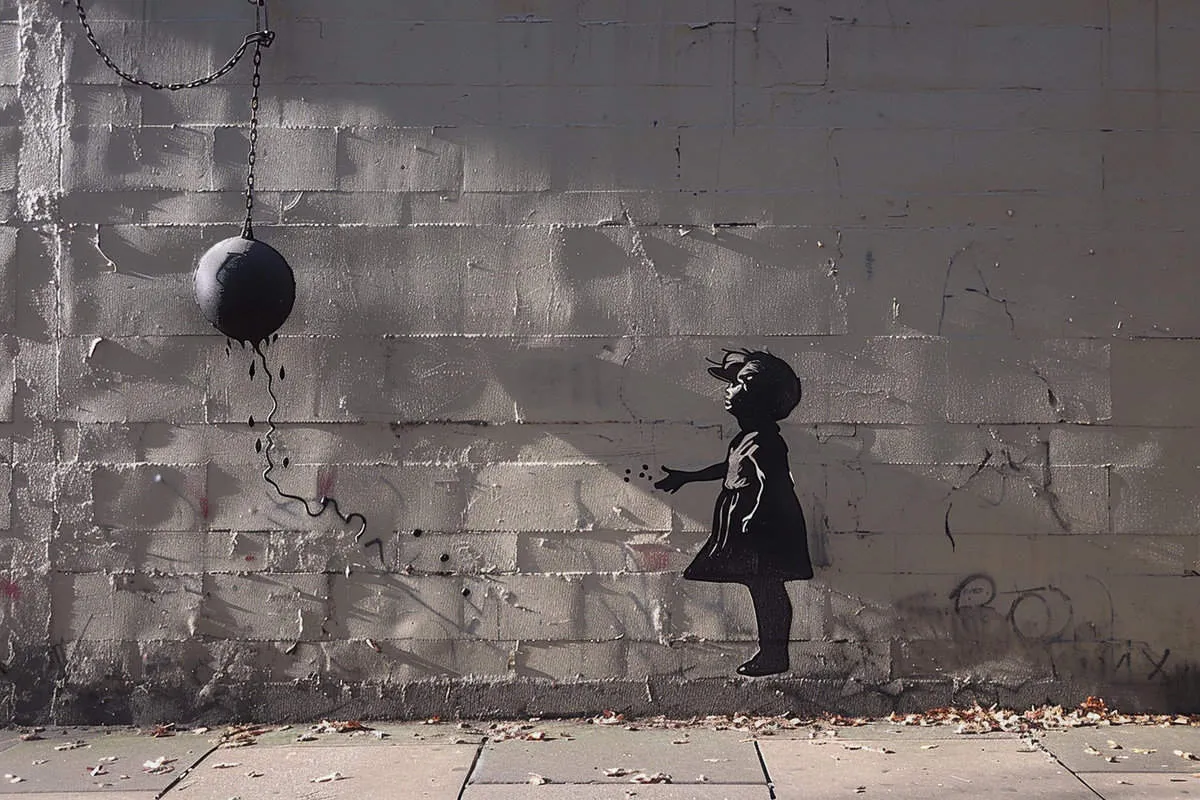United Kingdom Facts: Discover 10 Unique Insights
Dive into the heart of the United Kingdom, a land brimming with centuries-old history, rich culture, and breathtaking landscapes. From its world-renowned landmarks to its lesser-known quirky traditions, the UK is a treasure trove of fascinating facts waiting to be explored. Whether you’re a history buff eager to learn about ancient castles or a nature enthusiast curious about the UK’s stunning natural parks, this listicle has something for everyone. Prepare to be amazed as we uncover some of the most intriguing and unexpected aspects of British life. So, if you’re itching for some mind-blowing revelations about this iconic nation, scroll down for our top picks that promise not just information but an adventure.
The UK Consists of Four Countries
The UK is unique because it’s made up of four countries: England, Scotland, Wales, and Northern Ireland. Each one has its own capital city. London serves as the bustling capital of England, Edinburgh with its historic charm represents Scotland, Cardiff is the vibrant heart of Wales, and Belfast stands proud in Northern Ireland.
What makes these parts really stand out are their distinct cultures and languages. Imagine visiting each country within the United Kingdom and experiencing different traditions, accents, foods, and histories – all without having to use your passport between them!
- England boasts a rich history that spans millennia; from Stonehenge to Shakespeare.
- Scotland offers breathtaking landscapes like those of the Scottish Highlands and a strong sense of national identity.
- Wales impresses with its rugged coastline and Welsh language that echoes through valleys.
- Northern Ireland shares both the beauty of emerald landscapes like Giant’s Causeway and complex historical narratives.
This diversity means when people talk about “the United Kingdom,” they’re referring to a group made up by very distinct members. While united under one flag, each country proudly maintains its own identity through everything from sports teams to educational systems.
Windsor Castle Is the Oldest and Largest Occupied Castle
Windsor Castle has been standing for over 900 years, making it not just a piece of history but a living legacy. It’s more than just an old building; it’s the official residence of the Queen. Imagine walking through halls and rooms where history was made!
The castle isn’t just for royalty. It opens its doors to visitors year-round, offering a peek into royal life past and present. Think about wandering through the same rooms as kings and queens from centuries ago.
But what makes Windsor Castle stand out even more is that it’s still in use. Unlike many historic sites that serve only as museums or tourist attractions, this castle is home to real inhabitants—royalty! This fact adds an extra layer of fascination to your visit because you’re stepping into a place that is both historically significant and currently important.
Visiting Windsor Castle isn’t just about seeing old stones and artifacts; it’s about experiencing the continuity of British monarchy up close. From its towering walls to its luxurious rooms, every corner tells stories spanning nearly a millennium.
Stonehenge Is Over 5,000 Years Old
Stonehenge, a prehistoric monument located in Wiltshire, England, is an architectural marvel that has stood the test of time. This iconic structure is over 5,000 years old and continues to be a source of fascination and mystery.
The purpose behind the construction of Stonehenge remains unknown. Scholars and historians have proposed various theories over the years. Some suggest it was a burial ground; others believe it was used for astronomical observations or religious rituals.
What makes Stonehenge particularly intriguing is its design and construction methods. The massive stones were transported from long distances—some even from Wales! Considering the tools available at that time, this feat seems almost impossible without some form of ingenuity.
Stonehenge has been designated as a UNESCO World Heritage Site due to its cultural significance and historical value. Each year, thousands of visitors are drawn to this site to witness its majestic beauty firsthand.
Despite being studied for centuries, many aspects of Stonehenge remain shrouded in mystery. Its true purpose may never be fully understood but what’s undeniable is the skill and effort put into its creation by our ancestors.
The World’s Oldest Postage Stamp Originated in the UK
In 1840, the UK introduced something revolutionary – the “Penny Black.” This wasn’t just any stamp. It was history-making. Why? Because it was the very first postage stamp ever used.
The “Penny Black” features a profile of Queen Victoria, making it instantly recognizable. Imagine sending a letter back then and using this stamp. You’d be part of a groundbreaking moment in communication!
Before this stamp came along, sending letters was complicated and often expensive. The sender didn’t usually pay; instead, it was up to the receiver to cover the cost upon delivery. This system wasn’t ideal and limited who could send or receive mail.
But here comes the “Penny Black,” changing everything. For just one penny, anyone could send a letter anywhere within Britain. This made staying in touch with friends and family much easier for everyone.
This small piece of paper sparked a global change. Soon after its introduction by Britain—home to many innovations—the idea spread worldwide.
Nowadays, we might take email and instant messaging for granted but think about how this little stamp from over 180 years ago started it all! It revolutionized global communication, paving the way for how we connect today.
The UK Was the First Country to Use Postcodes
In the late 1950s, something groundbreaking happened that would change how mail was sorted and delivered forever. The United Kingdom set a global precedent by introducing postcodes for the first time. This innovative step wasn’t just about giving addresses a new look; it was aimed at boosting the efficiency of sorting and delivering mail across the country.
Imagine trying to find a single house in a massive city like London without any clear direction. That’s exactly what postal workers had to deal with before postcodes came into play. With this new system, each area got its unique code, making it much easier to sort letters and parcels quickly.
Speaking of London, it holds the special title of being the very first city in the UK to be assigned a postcode. This move not only streamlined postal services in one of the world’s busiest cities but also set an example for other regions to follow.
The introduction of postcodes revolutionized how we think about addresses and has since become an essential part of our daily lives. Whether you’re sending out invitations or ordering online, those few letters and numbers ensure your mail reaches you without any hiccups.
London’s Big Ben Is Not the Tower, But the Bell
Big Ben is actually not a tower at all. It’s a massive bell that lives inside what many people mistakenly call “Big Ben” but is officially known as the Elizabeth Tower. This iconic structure stands proudly at the north end of the Houses of Parliament in London.
The weight of Big Ben might surprise you—it tips the scales at over 13 tons! Imagine 13 small cars stacked on top of each other; that’s how heavy this bell is. Its sheer size contributes to its deep, resonating bongs that can be heard across London.
But who was Big Ben named after? The honor goes to Sir Benjamin Hall, a large man with a personality to match his size, who oversaw its installation during the mid-1800s. His name being inscribed on the bell itself led to it affectionately being called “Big Ben.”
It’s interesting to note that while many tourists and even some locals think they’re taking pictures of Big Ben when they snap photos of its towering home, they’re really capturing images of the Elizabeth Tower. Next time you visit or see an image online, you’ll know exactly where Big Ben hides – not looming over London but nestled within one of its most famous landmarks.
The UK Has a National Collection of Type Cultures
The UK is home to a unique treasure trove, not of gold or jewels, but something far smaller yet immensely powerful. It’s the National Collection of Type Cultures (NCTC), a vital repository for microorganism cultures. This collection is like a library, but instead of books, it houses living samples of bacteria, fungi, and viruses.
These tiny inhabitants are crucial for scientific study. Researchers from around the world can ‘borrow’ these organisms to understand diseases better, develop new medicines, or study our environment’s health. Imagine scientists as detectives and these microorganisms as clues that help solve medical mysteries.
The NCTC plays an essential role in medical and biological research by providing high-quality cultures needed for accurate studies. For instance:
- Bacteria from this collection have been used to develop antibiotics.
- Fungi studies lead to advances in agriculture.
- Virus research contributes to vaccine development.
This collection isn’t just about storing organisms; it’s about sharing knowledge globally. By keeping these cultures alive and accessible, the NCTC supports advancements in health care that benefit us all.
The UK Has More Than 1,000 Cheese Varieties
Did you know that Cheddar cheese, which is loved by many people around the world, comes from England? This famous cheese started its journey in a small village called Cheddar in Somerset. But that’s just the beginning of the UK’s cheesy story.
Apart from Cheddar, there are other popular types like Stilton and Red Leicester. Stilton is known for its strong flavor and blue veins running through it. Meanwhile, Red Leicester stands out with its bright orange color and slightly sweet taste.
The variety of cheeses reflects the UK’s diverse dairy heritage. With over 1,000 varieties available, it’s like a treasure chest for cheese lovers! Each region has its own special kind of cheese to offer.
One fun fact about this cheesy kingdom involves an annual event known as cheese rolling. People chase a wheel of cheese down a steep hill—the first person to catch it wins the cheese!
In comparison ranking with other countries based on their variety of cheeses, the UK holds a proud position at the top alongside France and Italy. This shows how seriously they take their dairy products!
The Queen Sends a Personalized Card for 100th Birthdays
Since 1917, there’s been a special tradition in the United Kingdom. When someone turns 100 years old, they receive a personalized card from the Queen herself. But it doesn’t stop there. For those lucky enough to celebrate their 105th birthday and every year after that, they also get this unique token of recognition.
What makes this gesture even more inclusive is that it’s not just for British citizens. People living in any Commonwealth country are eligible too. This means millions of people around the world have the chance to receive a royal nod on their significant birthdays.
Interestingly, statistics show that women are more likely to receive these cards than men due to their longer life expectancy. In fact, females make up a large per cent of centenarians globally.
Receiving such a card can turn an ordinary birthday party into something truly memorable. Imagine celebrating your big day and then getting notes from the Queen! It adds an extra layer of excitement and pride to the milestone.
Chicken Tikka Masala Was Reportedly Invented in Glasgow
Chicken Tikka Masala is a delicious blend of Indian spices and British tastes. It’s like when two friends from different places come together to create something amazing. Imagine mixing your favorite flavors into one dish; that’s what happened here.
This dish became super popular in the UK, almost like a food superstar. People everywhere started enjoying its creamy, spicy taste. It’s not just about being yummy; it’s also about bringing people together.
It symbolizes cultural integration, showing how different cultures can mix and create something new and wonderful. Think of it as a friendship between countries, represented by a tasty meal on your plate.
Frequently Asked Questions
What countries make up the United Kingdom?
The UK is a union of four countries: England, Scotland, Wales, and Northern Ireland. Think of it as a family living under one roof but with different rooms.
How old is Windsor Castle?
Windsor Castle takes the crown as both the oldest and largest occupied castle in the world. It’s been a royal home for over 1,000 years!
What’s special about Stonehenge?
Stonehenge is like the ancient world’s mystery novel; over 5,000 years old and still keeping its secrets about why it was built.
Where did postage stamps originate?
The very first postage stamp came from the UK. Introduced in 1840, it’s known as the Penny Black – not just any old stamp but a revolutionary piece of paper!
Why is Big Ben famous?
Big Ben isn’t actually a tower; it’s the bell inside! The tower itself has another name – Elizabeth Tower. So next time you hear “Big Ben,” think of that massive ringing bell instead.
Can you get a birthday card from The Queen when turning 100?
Yes! If you’re in the UK and hitting your centennial mark, expect to receive a personalized birthday card from The Queen herself. Talk about royal mail!
Was Chicken Tikka Masala really invented in Glasgow?
Surprisingly yes! Despite its Indian flair, Chicken Tikka Masala reportedly originated in Glasgow. It’s like Scotland’s culinary plot twist to traditional Indian cuisine.







